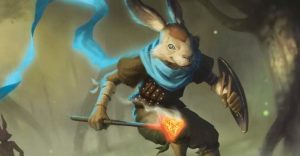Final Fantasy 7 On NES Didn’t Make It Much Further Than FF7 Remake

The Final Fantasy 7 Remake series’ first entry focused on the Midgar arc of the original, but the NES Final Fantasy 7 made it to the end of the story, albeit with a lot of content removed and altered. Many popular games receive fan-made “de-makes,” where the experience is replicated as if the game was made for prior generation hardware. The NES Final Fantasy 7 was among the first widely known de-makes and draws comparisons to FF7 Remake in a number of ways.
This Chinese fangame reused assets from the original three NES Final Fantasy titles to create an 8-bit version of the PlayStation classic. English-language gamers have been able to experience this strange project for some time thanks to a translation patch, but the more recent “Advent Children Edition” patch provides a somewhat better version of the worst way to experience Final Fantasy 7. This NES FF7 technically makes it all the way to the final confrontation with Sephiroth, and even contains a less ambiguous ending than the original. To do so, the de-make cuts large sections of the story entirely, and hand waves away others, essentially jumping from the end of disc one of the original FF7 to the game’s final boss.
Some gamers complain that the recently released Final Fantasy spinoff game Stranger Of Paradise and FF7R share a flaw, in that both are alternate retellings of classic games that still require experience with the original to fully understand them. Stranger of Paradise revisits the story of the original 8-bit Final Fantasy, adding new and unexpected twists like FF7 Remake did for Final Fantasy 7. Unlike those official titles, the NES version of FF7 largely remains close to the original game’s plot, with the latest translation patch mostly word for word to the PS1 version’s dialogue, with few exceptions. The game begins as Cloud exits a train and joins Barret and other Avalanche members for a raid on a Shinra reactor, just as FF7 has always started. FF7 NES presents this through crude 8-bit character sprites and backgrounds, making the PS1 version look jaw-dropping in comparison, to say nothing of FF7 Remake’s modern AAA presentation.
It is still unclear whether the upcoming Final Fantasy 9 remake will be episodic like FF7 Remake, but whatever choice the developers make, it will likely be a better experience than FF7 NES. The original Final Fantasy 7 was a competently designed, reasonably challenging JRPG, and FF7R added action game elements to the mix. Players who slog through FF7 NES will have to cope with a system cobbled together with bits and pieces of the NES Final Fantasy 2, alongside nods to FF7’s original gameplay. Characters can equip Materia which levels with use, like the FF2 advancement system which inspired the SaGa series. Individual weapons also level up in FF7 NES, so players will need to ensure their party buys the best weapons available, but also that they level up those weapons by using the Attack command repeatedly. General equipment shops sell weapons and armor, and weapons shops now exist solely to upgrade weapon proficiency levels, whereas Materia shops do the same for the magical stones, in FF7 NES.
NES Final Fantasy 7 Begins Disc Two Content, Then Leaps To The Game’s Finale

For those who can bear the high-difficulty grind of FF7 NES, there is some novelty value in seeing the story through the lens of the 8-bit era. Players will understand why Final Fantasy 7’s Cloud and Sephiroth hate each other by the end, at the very least. The iconic death of Aerith is reproduced in simple sprite form, but other FMV scenes are simply removed and replaced by text. The handful of minor dialogue choices are omitted in FF7 NES, so players will have no say in matters like who Cloud gives a flower to in Midgar, or who accompanies him at the Golden Saucer. The game does, admirably, cover a lot of the same story beats as the original, but it cuts or severely truncates much of the content. The optional characters, Vincent and Yuffie, are unplayable, though players may see Vincent in the Nibelheim Shinra mansion, or encounter Yuffie as a Materia upgrade shopkeeper in Costa Del Sol with the Advent Children Edition patch.
The Disco Elysium de-make for the Game Boy is an impressive homage to a modern-day classic, showing that even de-makes have improved significantly since the time of FF7 NES. Those who adjust to the steep difficulty and cumbersome mechanics of the fan-made Final Fantasy 7 can experience roughly the first disc of the original game’s content, in terms of story. The overworld map largely conforms to its design in the original, but the airship never becomes available, and optional areas like Wutai are inaccessible. After scaling Gaea’s Cliff, the first major section of disc two in the original, the game abruptly leaps to the endgame battle with Jenova and Sephiroth. The emergence of the Planet’s Weapons is mentioned, but they are never shown in FF7 NES. Scaling Gaea’s Cliff, which is more of a cave in FF7 NES, leads directly to a “Materia Tree” area where Sephiroth waits for the final battle. This omits the race with Shinra to acquire the Huge Materia, the battle with Diamond Weapon, the journey into space, as well as the entirety of the final dungeon.
While a few RPG fans question why FF7 Remake was released on fewer discs than the original, or why it only covered roughly half of the first disc of the PS1 game, the quality of the remake is undeniable. Events that were rushed in the PlayStation original, without time to build adequate emotional stakes or characterize reactions, were allowed room to breathe. Primary characters like Barret were vastly improved and the supporting cast like the other Avalanche members also received added development. Where FF7 Remake built on the original, elaborating on the story and strengthening the game, FF7 NES strips Final Fantasy 7 down to sheer minimalism. Lacking even the PlayStation’s level of cinematic presentation, which was impressive for its era, the 8-bit de-make rushes through the dense lore and emotional moments, separated only by segments of experience grinding and repurposed sprites.
The New Patch Improves FF7 NES, But Novelty Factor Only Goes So Far

After defeating the Whispers, the embodiments of fate and inevitability, the ending of FF7 Remake leaves its sequel the opportunity to go in new directions, veering further from the original game. The ending of FF7 NES, conversely, removes all of the ambiguity of the original. Whereas the PS1 Final Fantasy 7 did not explicitly say what effects Aerith’s Holy Materia had, and whether humanity was saved from Meteor, it did confirm that life went on, as Red XIII’s descendants were pictured.
The cinematic scenes of the original, or the fully voiced immersion of FF7 Remake, are absent and the Advent Children Edition of the NES de-make spells out the happiest ending possible: Holy stops Meteor, but not before Shinra tower is destroyed, and Cloud and his friends live happily ever after, in essence. A vision of Final Fantasy 7 from two gaming generations before its actual release remains a unique curiosity for hardcore fans, and the Advent Children Edition patch is a laudable improvement, but the majority of gamers would be better off waiting for the next installment of Final Fantasy 7 Remake to revisit the beloved RPG classic.
About The Author

















